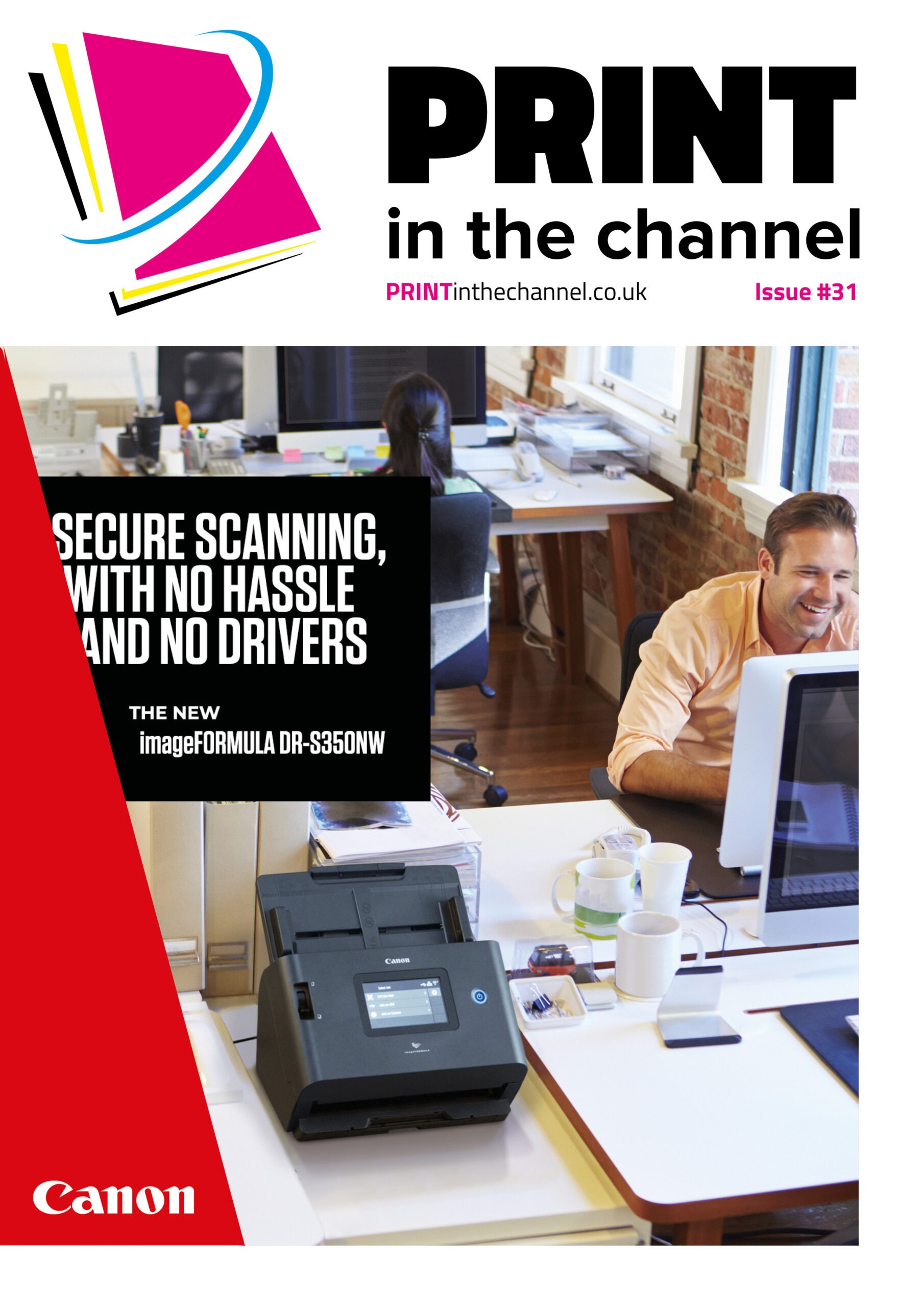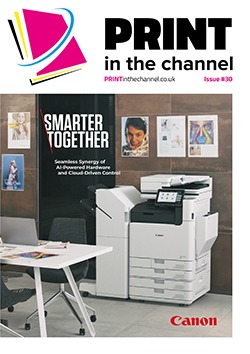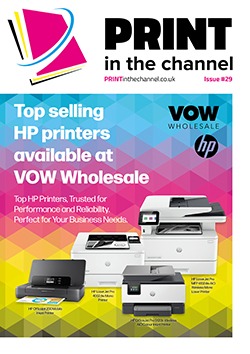As awareness of the need to be more sustainable grows, more businesses are getting involved in the circular economy with their print fleet and resellers have a vital role to help customers in this. Focus is not just on how devices such as printers are sustainable in the field, but through their whole lifecycle – meaning that the circular economy is becoming more important.
Dan Wogan, product manager for office printing at Epson UK, says interest in the circular economy increasing across businesses of all sizes. “It serves as a sustainability initiative and a practical strategy to cut costs and meet environmental targets,” he says.
“Businesses are realising that extending the life of products, reducing material use, and closing the loop on waste not only helps contribute to a greener planet but also makes long-term business sense.
“From SMEs to large corporates, organisations are looking at how their technology choices – printers included – can play a role in supporting waste reduction, energy efficiency and cost control, all of which sit at the heart of circularity.
“For many corporate tenders, circularity is now more than a nice-to-have. It’s a requirement. In some cases, organisations without clear circular solutions risk being excluded from valuable business opportunities.”
Steve Pearce, head of marketing at Kyocera Document Solutions UK, adds that many businesses are starting to take a more holistic view of their environmental impact. “This means not just reducing energy use, but also rethinking how products and materials are used, reused and recycled,” he says.
“As pressure from regulators, employees and customers increases, companies are starting to see circular principles as a crucial part of building long-term resilience and safeguarding their reputation. This includes looking at the full lifecycle of their devices and print infrastructure, such as the manufacturing process, design and durability.”
OEM response
Printer manufacturers are responding to this growing demand. “OEMs like Epson are embedding circular economy principles into the full lifecycle of printing technology, from design and production to operation, servicing and end-of-life processes,” says Dan.
“A standout example is heat-free inkjet technology, which requires fewer consumables and experiences less wear and tear than traditional laser printers. This helps reduce resource consumption and extend the printer’s usable life.
“Another example is Epson’s Replaceable Ink Pack System, which offers high-capacity ink yields, dramatically reducing the frequency of replacements and cutting down the volume of packaging, transport and disposal.
“OEMs are also supporting circularity through extended serviceable lifespans, with long warranties, such as Epson’s eight-year warranty that can help customers keep their devices in the field for longer while minimising e-waste.”
Steve adds that print manufacturers are investing in long-life technology, recyclable components and improved end-of-life solutions to meet these demands. “For example, Kyocera has developed an industry-first upcycling process that turns waste PET film, a byproduct from Kyocera’s multilayer ceramic chip capacitors production, into structural parts for new printers,” he says.
“Previously this material was incinerated; now it’s reused, with expected annual CO2 savings of 5,500 tonnes; Kyocera is also working to increase the proportion of recycled plastic in each device – practical examples of how eco-conscious design principles and life-cycle assessments inform a range of environmental considerations to support a circular approach.
“Focus areas for Kyocera are durability factors to reduce parts replacement and disposal; 3R factors to ‘reduce, reuse and recycle’, plus energy efficiency factors to minimize GHG – all of which have reduce negative impact on the environment and deliver significant energy savings or cost benefits for our customers.”
Gillian Nuttall, people and culture ESG partner at Konica Minolta Business Solutions (UK) Ltd, adds that Konica Minolta is making significant strides in its contribution to the circular economy. “Our manufacturing process recycles disposable plastics and in FY2023 the company used 4,000 tonnes of this material in production,” she says.
“This innovation in our manufacturing process has enabled us to build our production printing systems with up to 36% recycled materials and almost half of every new MFP is made of recycled material. However, we aim to go further with a target of 90% of production to be made from recycled and biomaterials by 2050.
“We want Konica Minolta products to be in use for as long as possible and this means designing products that place reuse, repair and recycling at the forefront. By embracing circularity, businesses can reduce their environmental footprint while creating new opportunities for growth and innovation.
“We are constantly looking at ways we can improve and drive towards a circular and regenerative economy through partnerships, new programmes, our products and solutions. An excellent example of this is our collaboration with Agilico. At its national MFD refurbishment centre in Leicester they are giving a new lease of life to our ex-showroom and low-utilisation devices, extending their life for many more years.”
Reseller role
Resellers can play an important role in helping customers to partake in the circular economy too. “By championing products that are designed to last, use fewer consumables, and support end-of-life recycling, resellers help businesses make responsible, sustainable choices that encourage devices like printers to contribute to the circular economy,” says Dan.
“Resellers can also advise on return schemes, offer access to remanufactured and refurbished devices, and provide maintenance support that helps extend product life and reduce unnecessary upgrades.”
Steve adds that resellers play an important role in helping businesses make more sustainable choices, not just at the point of purchase, but throughout the entire product lifecycle. “That could mean advising customers on how to recycle devices responsibly or pointing them towards take-back schemes,” he says. “With Kyocera, we have Device Recycling and Toner Take Back Services, which offer a free and easy way to recycle our products. Resellers who know about and promote these sorts of schemes can make life easier for customers and help them meet their sustainability goals at the same time.”
What to highlight
When talking with customers about sustainability in print and the circular economy, resellers should focus on certain aspects.
For instance, the practical value it delivers to businesses in terms of sustainability and cost efficiency should be mentioned, according to Dan. “Customers increasingly want to know how their print infrastructure can support their wider environmental targets, and resellers are in a prime position to provide that guidance,” he adds.
“It’s important to explain how sustainable print technologies help reduce unnecessary waste, such as through fewer consumables, longer service intervals, and devices that are built to last. But equally, resellers should position themselves as partners in helping customers take action, whether that’s through recommending extended-warranty products, helping implement a return or recycling scheme, or encouraging the use of refurbished equipment where appropriate.”
Gillian adds that Konica Minolta provides customers with tools that help them monitor and manage their environmental footprint and support them with practical advice. “Our Eco Calculator is a web-based tool that enables organisations to measure the carbon footprint and paper consumption of their print devices,”
she adds.
“Our ‘Switch On Power Save – Rethink the Way You Print’ provides practical advice on how customers can get the most from their Konica Minolta bizhub devices, while at the same time reducing energy consumption and focusing on the most efficient way to print.”
Steve says that resellers should draw attention to things like the materials used in devices, how easy they are to maintain and what happens to them at the end of their life. “Customers are also increasingly interested in services like free recycling or carbon offsetting,” he adds. “Carbon-neutral printing, for instance, can help businesses cut down on their CO2 emissions. Resellers don’t need to have all the answers, but being able to point customers to these kinds of options shows you understand what matters to them, and it’s a great way to build trust.
“We’re seeing an increase, especially from public sector customers, requesting more information on their CO2 emissions. For these customers resellers can suggest our new MZ7001 SRA3 Series which provides a graphical display of power consumption and CO2 emissions during operation of the device.”
Growing importance
Commentators agreed that the circular economy will continue to grow in importance in the coming years. “The circular economy isn’t a passing trend, it’s a fundamental shift in how products are made, used, re-used and recovered,” says Dan.
“For resellers, this presents a real opportunity. Those that embed circular economy principles into their offering can build stronger relationships, offer more value-led propositions, and help customers meet increasingly complex sustainability goals.”
Steve adds that the circular economy is becoming embedded in procurement policies, ESG reporting and legislation. “Businesses are under growing pressure to demonstrate measurable sustainability progress, and the print sector is part of that picture,” he says. “Resellers who can support customers through that shift with practical advice and solutions will stand out. It’s a chance for them to be a part of the conversation and stay ahead of the curve.”










